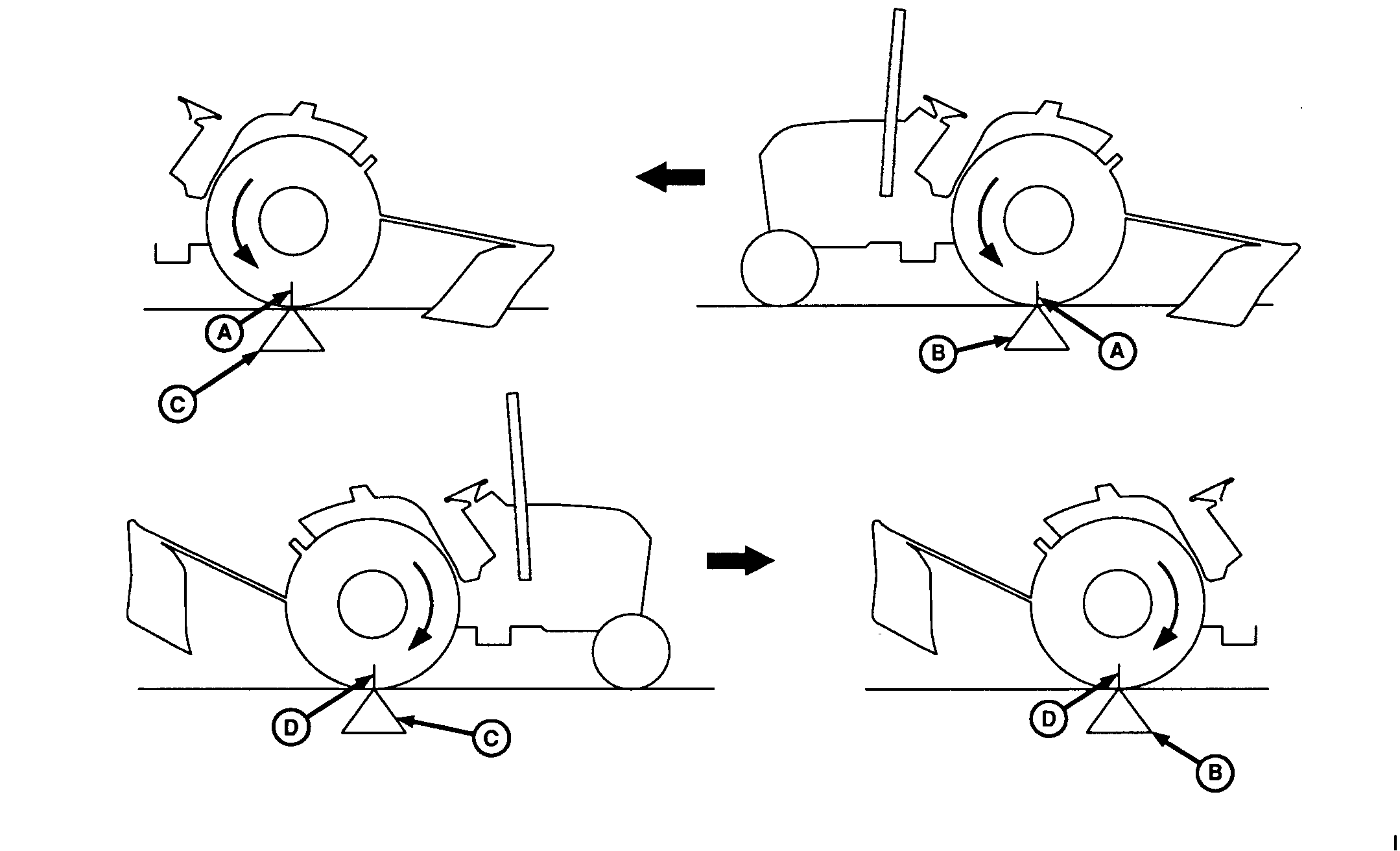Measure Wheel Slip-Manually

|
|
1.
Place a mark (A) on a rear tire which is easily observed (a chalk mark is recommended).
2. With tractor working, mark a starting point (B) on the ground at the place where the tire mark (A) meets the ground. 3. Mark the ground again where the tire mark (A) completes 10 full revolutions (C). 4. With implement raised return in the opposite direction. At the second mark on the ground (C) remark the tire (D). 5. While driving the tractor along the same path (implement raised), count the tire revolutions required to reach the starting point (B). 6. Use the return tire revolutions count and "Wheel Slippage Chart" to determine slippage. 10-15 |
percent for two wheel drive or 8-12 percent for MFWD engaged tractors is ideal.
7. Adjust ballast or load to give correct slippage. NOTE: Available horsepower is greatly reduced when wheel slip drops below 10 percent.
|
|||||||||||||||||||||||||||
SA61034,0000237 -19-29FEB08-1/1 |